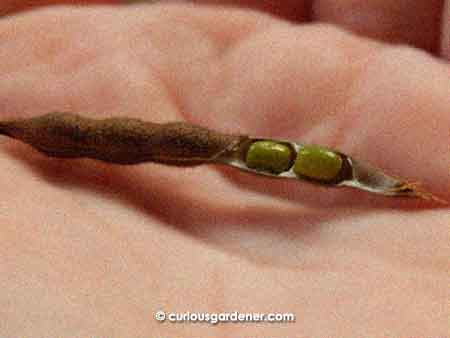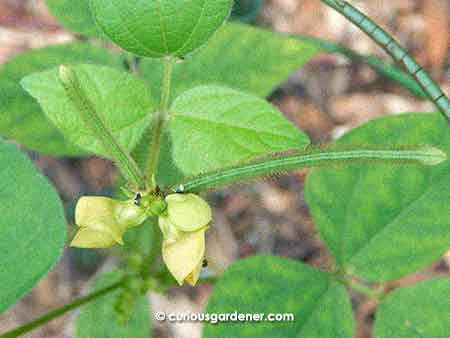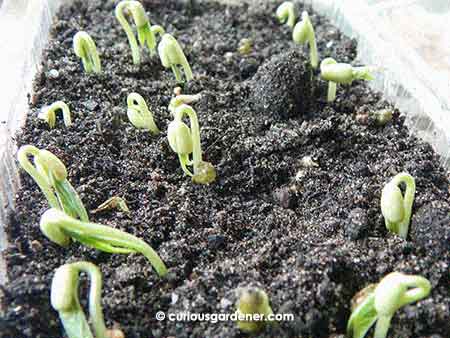Possibly for the first time, I’m growing an edible plant for the sake of growing it, rather than with the intention of consuming its edible parts. Why? It’s a leguminous plant that introduces nitrogen to the soil, and when you intend to grow edibles intensively, it’s good practice to grow a crop of legumes before you start planting other plants.
I’ve attempted to do this in the past with bush beans like French beans. The problem was that those beans didn’t seem to like our climate or perhaps our garden, and didn’t grow well enough to start fruiting. Then when I visited my permaculture friend’s garden, I saw that he grew mung beans as his nitrogen fixers – and that they grew very well indeed!
I got a couple of pods from him to start growing plants, but when you want to prepare garden beds, you need much more than that. So, the next time I went to the supermarket, I saw and bought a nice packet of organic mung beans and sowed a handful once I got home. They germinated within days, and I was happy. I planted them in an experimental bed just to see how they grew, because that’s what I like to do the first time I grow anything. I call it the “getting to know you” period.
The plants grew about a foot tall before pale yellow flowers began to bloom. To my delight, pods soon followed, albeit short ones, and I left them on the plants until they began to dry up. When the pods had turned dark brown in colour, I plucked them and eagerly split open the dry pods to reveal the bright green mung beans inside. It was a proud moment. Then, I sowed the new seeds back in the bed and watched as the new generation grew.
The interesting thing about this is that the second generation plants, having grown here, grew stronger and had longer pods. The original seeds hailed from India. I’d imagine the climate where the mung beans had grown is similar but not the same as ours here in Singapore, which is why the original beans didn’t grow that well. It just shows that once you successfully grow something, it’s good to save seeds as the plants have acclimatised to your garden or plot, and will likely continue to do so with each new generation.
It’s also a great investment. If, for example, I had stuck with the original two pods that had sixteen seeds, and if each plant bore three pods of eight seeds, I’d have harvested 384 seeds from the original sixteen. If you replant all those seeds, and the ones after that, you’d get a mung bean farm in no time!
Let me give you a little tip, though. It’s a good idea to germinate your seeds indoors first because there are birds that will simply devour the seeds, even though you’ve pushed them into the soil and covered them with mulch. I had one experience where I had thickly sowed a bed and covered it with some of my woodchip mulch only to see several spotted doves descend on the bed the next day and flick away the mulch to get to the seeds! They had a great feast and I had a mini tantrum…
I’m glad that I’ve finally found a good nitrogen fixer for our garden. Once I get through the initial bed preparation phase, I’ll continue growing mung beans, this time with consumption in mind. I will probably interplant them with other plants. And of course, we’ll continue to grow other beans that we love but need trellises.
© 2017 curiousgardener.com All rights reserved.



